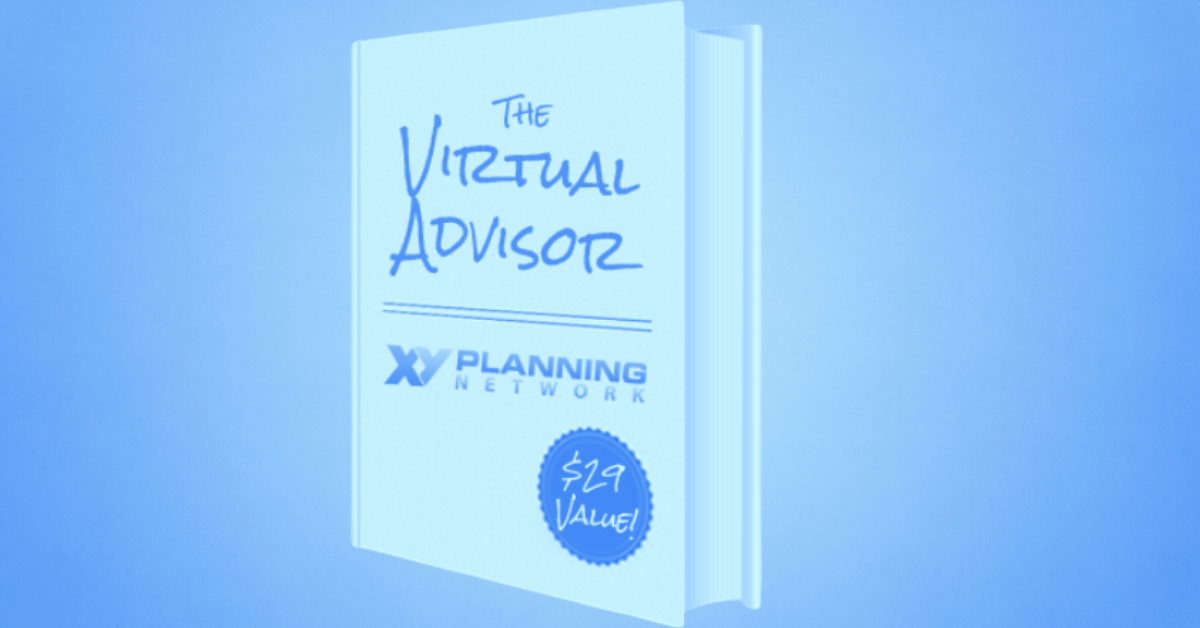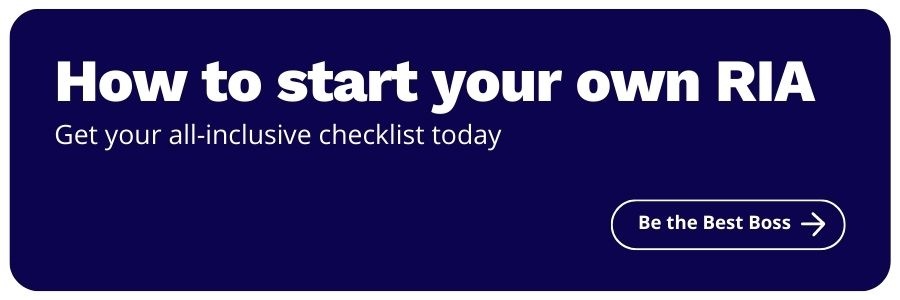How Virtual Advisors Can Create Their Ideal Office
Share this
Editor’s Note: This blog post comes to us from XY Planning Network co-founder Alan Moore.
One of the first tips you will hear from financial planners that have started their own financial planning firm is to keep your expenses under control. I frequently see start-up firms spending way more money than necessary on things they think they need, but don’t actually need -- and one of the biggest line items on your first year budget can be office space.
Not only is it expensive, but typically comes with long lease agreements that can stifle your ability to make changes in your business. When you are thinking about starting a firm, trying to decide how to take your firm to the next level, or wanting to explore virtual planning options, office space is something to think long and hard about.
Before we start, it is important to think through who your ideal client is. I like to ask new firms a question that Kristin Harad (marketing coach for XY Planning Network) asked me when I launched:
“Imagine I could send you the perfect client – what makes them ideal for you?” The answer to that question should dictate which of the following options you ultimately decide to adopt.
How Virtual Advisors Meet – for Free
The number of financial planners that work mostly (or entirely) virtually is on the rise. These virtual advisors work with clients by phone, e-mail, and/or video conference.
There are some huge advantages of working virtually with your clients:
It’s Free – You don’t need to spend money on an office space, hire a receptionist, or buy furniture.
More Efficient for Clients – When clients can meet with their planner from home or work, it allows them to avoid sitting in traffic, getting a babysitter, finding parking, etc. If you live in a city, an hour long meeting could easily cost a client 2 to 3 hours of total time, which is a huge ask of your clients.
More Efficient for Advisors – Clients frequently show up early for their meeting. Unless you have a reception area and someone hired to greet those clients, you end up with interruptions in whatever project you are working on. I found that I would wrap up my work 15-20 minutes before the meeting was supposed to start in order to make coffee, straighten up the meeting space, and then wait… just in case they showed up early.
Allows for Global Reach – When advisors insist on meeting with clients in person, they lock themselves into only working with clients in their immediate area. When advisors meet with their clients virtually, it opens up the door to working with clients anywhere in the world. This means advisors can focus on finding and working with their ideal clients… not just the ones that live near them.
It Frees the Virtual Advisor – As someone who has lived in 4 different states in 4 years, I value mobility. When you meet with your clients virtually, they don’t care where you are sitting.
Want to move you family from Wisconsin to Bozeman? You can do that -- and I did, and didn’t lose a single client because of it.
 Want to visit Peru and not have your business stop running? XYPN member Sophia Bera did just that last year, and I doubt any of her clients would have noticed if she didn’t tell them.
Want to visit Peru and not have your business stop running? XYPN member Sophia Bera did just that last year, and I doubt any of her clients would have noticed if she didn’t tell them.
Ultimately an office space chains you to a certain location, which may or may not be something you want in your life.
Meet Clients in Your Home
I have worked with CPAs over the years that met with clients in their home. Financial planners also have this option if it suits their business needs.
There are some advantages, as well as important considerations, with this meeting space option:
More Efficient for the Advisor – As compared to some of the later options which require the advisor to go to a meeting location, this option cuts out the drive time for the advisor. This can save time, money, and energy when meeting with clients.
Housing Layout – This meeting space option is most effective when your home is laid out in an appropriate manner. Whether it means having a separate office space over the garage, or having a side door that goes directly into a meeting space, it helps when your home layout facilitates a semi-professional space.
That being said, some advisors simply sit at their dining room table with clients and feel it provides a really intimate meeting environment.
When I started my firm, I lived in a studio apartment so obviously my housing layout wouldn’t facilitate this option. However, if you have the space, and feel your ideal clients would appreciate meeting in your home, then this can be a great option.
Meet in the Clients' Home
Some advisors choose to take on the burden of traveling to the meeting off the client by simply meeting in their clients’ home. This option:
Is More Efficient for Clients – It eliminates the need for clients to battle traffic to get to the advisor's office, find parking, take time off during work or find someone to care for children in their home, and so on. Instead, they can simply head home and meet with their financial planner in their own home.
Offers Intimate Perspective – Advisors that meet in the clients’ home will tell you that they have a unique perspective on their clients’ lives. By meeting in their home, clients tend to be more relaxed, and might be willing to open up their hearts a little more when discussing personal financial matters.
Presents Unique Challenges – While many clients may be okay with their financial planner coming into their home, some may not be as inviting. As the father of a four month old, I now realize how long it takes to clean up the house when someone comes over… and he’s not even walking yet!
This also requires the advisor to spend a lot of time traveling, which isn’t the best use of time. I would recommend the advisor make good use of the “time within time” when driving, by listening to podcasts or books on tape.
Virtual Advisors Don't Have to Be 100% Virtual: Meet in Coffee Shops or Other Public Spaces
For advisors who want to offer virtual services but want the option of meeting clients in person, meeting in a public space might be a good option. This also serves advisors who want to work at home but meetings in their own home or the clients' homes isn't realistic (or desired).
Carl Richards once asked me, “where do conversations happen in our society?” His answer: coffee shops. To be fair, Carl was explaining why his office is designed and laid out like a coffee shop (it’s awesome), but it is why some advisors choose to meet in a public space.
Popular meeting options include coffee shops, a nice restaurant in town, the local wine bar, and the list goes on. Some things to keep in mind with this option are:
Locating a Quiet Space – Finding a quiet corner in a coffee shop might be difficult. I once planned to meet in the local coffee shop, only to get there and the place be absolutely packed. Needless to say, we ended up at the wine bar next door.
Concerns with Privacy – When meeting in a public space, advisors should be aware of their surroundings. Meeting in a public place might be best suited for introductory type meetings, but your client might want more privacy for the discovery or presentation meetings.
Expenses – Depending on your location of choice, it can get a little expensive to meet in public locations. Be sure that if you are dropping money on meals at a restaurant, it's worth the cost. If not, try to opt for the cheaper options (like the coffee shop).
Part-Time Office Space
Advisors looking for a more traditional meeting space might find a home in a space they can pay for on an as-needed basis, instead of locking themselves into a full-time office space. Popular options include:
Virtual Offices – For advisors looking to meet in Class A (read: really fancy) office space, a virtual office might make sense. The most well-known virtual office company is likely Regus as they are in every major city in the US. There are always local options, too.
Virtual offices are typically laid out with a reception area near the front door, and various meeting spaces in the rooms behind. A receptionist is available to greet the client and show them to the assigned meeting room.
Virtual office agreements are typically offered on an al a carte basis, or bundled into a monthly subscription. Additional services typically include: professional office address (no more using your home address), mail sorting & forwarding, scanning/copying/faxing services, phone answering, and more.
This option allows advisors to meet in really nice office space without having to pay full price of the lease. It also avoids the need for expensive office furniture, hiring a receptionist, and other expenses associated with maintaining your own office space all the time.
Co-Working Space – Much like virtual office space, co-working space is a version of shared office space. Co-working spaces have become popular in the tech community as a great way to work outside their home (which does get lonely at times), network with others in a similar field, and have access to resources like printers, scanners, and high-speed internet.
Co-working spaces typically don’t have receptionists and are usually designed for work instead of meetings. But many co-working spaces have been moving in this direction. I have found that co-working spaces with sell a punch card with a certain number of day passes, or sell different levels of subscriptions based on number of hours/days you need the space. Conference rooms are typically available, but they might come with a separate fee.
When XYPN member Mary Beth Storjohann launched her firm, she was a member of The University Club in San Diego. Membership included a lot of benefits, such as access to a fabulous dining area, private bar, networking groups and more -- and one of the coolest features was access to private meeting rooms in the club.
She was able to meet with clients in a private setting, and then have dinner or drinks afterwards. It provided a great space to work from and gave clients access to a private club that most had heard about, but few had stepped foot in.
Part-Time Space in COI’s Office – This is my favorite option for finding space to meet with clients, but I suspect it is the least used option out there.
Take a look at your list of Centers of Influence (COIs) that you are looking to build a strong relationship with (for potential referrals or other reasons). Then visit their office space and see if they have a conference room or meeting space that isn’t used full-time.
When I first moved to Montana, I was only here part-time and needed a meeting space but didn’t want to commit to a lease. I found an estate attorney in town with 3 lawyers and 2 conference rooms. He agreed to let me pay $20/hour to rent the conference room, and the same rate for any time spent by his assistant handling my mail.
This gave me a professional address in the city, a nice meeting space for super cheap, and helped me build relationships with attorneys that have led to gaining additional clients.
Full-Time Office Space
Some advisors, even solo firm owners, simply prefer to have an office to work from and meet with clients in. Your living situation may not be conducive to working from home, or you simply prefer the peace and quiet of working in an office.
When looking for office space, start with your COI and see if any have an extra room available. Working out of an attorney's or accountant's office can help you build relationships with professionals that also work with your ideal clients.
If you decide to go the “traditional” route and rent an office space, keep in mind that this will come with a lot of additional expenses that the other options presented might help you avoid. I learned this the hard way.
I was 25 when I launched my firm and was constantly told that no clients would work with me simply because of my age. I felt like I needed a professional office space to give me additional legitimacy.
Come to find out, this was total crap… but that’s a story for another day. Expenses included:
- Lease
- Utilities
- Internet
- Cleaning fee
- Liability insurance
- Cost to purchase furniture, a coffee maker, and a TV to display the financial plan
- Signage for the building and my office door
All-in, my $300/month office space turned into a $600/month (in addition to the $1,000 I spent on furnishings) burden on my pocketbook.
Having an office space may ultimately be the best option for you, but I always encourage advisors to think long and hard before signing a lease. If you want to explore the benefits of being a virtual advisor, other arrangements can make better financial sense for your business.
And if you are just launching a firm, minimizing your expenses is going to go a long way in helping you get on your business feet. Exploring part-time, alternative, and virtual office options also gives you time to figure out what you really want your business to look like.
Your ideal client profile may change over your first few years in business, which may affect your initial choices in meeting space and office setup.
Share this
- Advisor Blog (690)
- Financial Advisors (219)
- Growing an RIA (99)
- Digital Marketing (86)
- Marketing (83)
- Community (81)
- Start an RIA (75)
- Coaching (72)
- Business Development (70)
- Running an RIA (70)
- Compliance (69)
- Client Acquisition (65)
- Technology (64)
- XYPN LIVE (59)
- Entrepreneurship (56)
- Sales (48)
- Practice Management (44)
- Client Engagement (41)
- XYPN Books (38)
- Bookkeeping (37)
- Investment Management (37)
- Fee-only advisor (34)
- Lifestyle, Family, & Personal Finance (31)
- Employee Engagement (30)
- Client Services (25)
- Financial Education & Resources (24)
- Market Trends (21)
- Journey Makers (20)
- Process (14)
- Niche (11)
- SEO (9)
- Scaling an RIA (8)
- Career Change (7)
- Partnership (6)
- Transitioning Your Business (6)
- Transitioning To Fee-Only (4)
- Social Media (3)
- Transitioning Clients (3)
- Emerald (2)
- Persona (2)
- RIA (2)
- Onboarding (1)
- Sapphire (1)
Subscribe by email
You May Also Like
These Related Stories

Grow Your Business by Working with a Virtual Team
Mar 18, 2015
10 min read

How to Create a Business That Supports Your Great Life
Jul 8, 2015
5 min read





